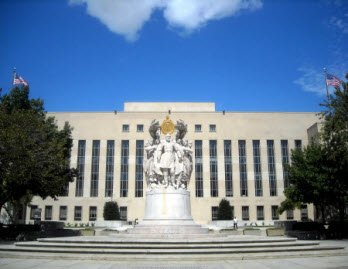The Surprisingly Narrow Title II Decision

I have to confess that, at the time the U.S. Court of Appeals for the D.C. Circuit upheld the Federal Communications Commission’s 2015 Title II order, I did not focus on the court’s analysis of the First Amendment claims raised by other parties. Only after reading the concurrence in the recent court decision declining to rehear the appeal, did I understand the panel majority’s view of the scope of the Title II order.
In short, the court’s rejection of the First Amendment claims was based largely on a very narrow reading of the FCC’s order — a reading that would suggest that, for all its baggage, Title II is not even an effective tool for doing what it was supposed to do — prevent blocking or slowing of certain Internet traffic by ISPs that are purportedly undisciplined by market forces.
Related: D.C. Court Denies Open Internet Decision Re-hearing
According to the concurrence, which was written by Judges Sri Srinivasan and David S. Tatel (the same judges who wrote the underlying decision), “the net-neutrality rule applies only to ‘those broadband providers who hold themselves out as neutral, indiscriminate conduits’ to any content of a subscriber’s own choosing (quoting the underlying decision).”
The concurrence goes on to say, “The rule does not apply to an ISP holding itself out as providing something other than a neutral, indiscriminate pathway — i.e., an ISP making sufficiently clear that it provides a filtered service involving the ISP’s exercise of editorial discretion.”
I was surprised by this, though I should not have been since the FCC’s own lawyer implicitly conceded this point during oral argument. And even supporters of Title II now appear to agree that the scope of Title II is limited to ISPs not offering a “curated experience.” However, in the past, supporters of Title II often alleged that without reclassification, ISPs would be free to block unpopular opinions or viewpoints that they disagreed with. In the understanding of the D.C. Circuit panel majority, it seems that the Title II order does not touch such practices as long as an ISP clearly discloses its blocking plans to customers.
Now, this point may be almost entirely academic since most ISPs have never indicated much interest in content-based blocking. But it is nonetheless interesting that the Title II order, as understood by Srinivasan and Tatel, does not prohibit such practices. Before reading the concurrence, I assumed that the FCC’s rules would actually prevent ISPs from engaging in “editorial discretion.”
It is also noteworthy that Judges Srinivasan and Tatel did not limit this rather significant limitation on the impact of the order to blocking of Internet traffic. Rather, they explain that it “would also be true of an ISP that engages in other forms of editorial intervention, such as throttling of certain applications chosen by the ISP, or filtering of content into fast (and slow) lanes based on the ISP’s commercial interests.”
Wow. ISPs are not only free to engage in content-based blocking, they can even create the long-dreaded fast and slow lanes so long as they make their intentions sufficiently clear to customers.
Once again, perhaps this is purely academic, since ISPs have not indicated any real interest in pursuing fast and slow lanes. But I was surprised to learn that the Title II order may prohibit such practices only to the extent that ISPs voluntarily hold themselves out as neutral conduits, and do not clearly disclose plans to filter content and applications based on their commercial interests. In other words, at the end of the day, it appears that only market forces, and not FCC rules, prevent ISPs from doing virtually everything that proponents of the Title II order feared. Which is ironic, to say the least.
Indeed, it appears that a variety of practices, which have at various times been alleged to violate net neutrality, may in fact fall outside the scope of Title II “rightly understood.” See, for example, MetroPCS’s plan to offer a low-cost tier blocking most video streaming (except for YouTube), as well as the original version of T-Mobile’s Binge On, not to mention the “net neutrality worst case” scenario. Apparently, all of those plans, either in reality or at least in theory, would fall outside the Title II order if accompanied by adequate disclosures.
But the real question here is: Are Judges Srinivasan and Tatel correct? I don’t think this is a purely academic question. If they are not correct, then the court did not ever really reach the First Amendment claims made on appeal, which has implications for whatever the FCC might try to do in its latest net-neutrality proceeding. Alternatively, if they are correct, then the Title II order is the equivalent of a seriously underdressed emperor.
Hank Hultquist is senior vice president of federal regulatory at AT&T.
Multichannel Newsletter
The smarter way to stay on top of the multichannel video marketplace. Sign up below.
